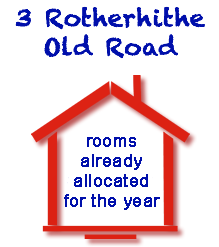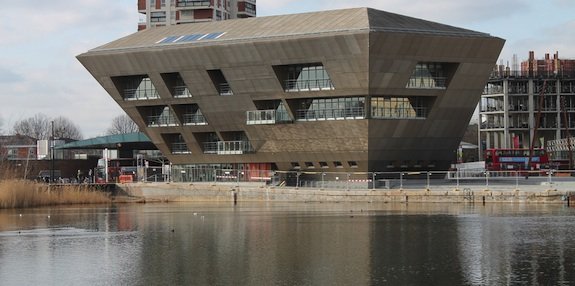Area history
Surrey Quays station was first opened in 1869, named ‘Deptford Road’. In 1911 it was renamed ‘Surrey Docks’, and then renamed again in 1989 to ‘Surrey Quays’.
In 1865 the East London Railway Company purchased the Thames Tunnel, which was originally built to allow the passage of horse-drawn carriages. In 1869 the East London Railway opened, and originally went from Wapping to New Cross Gate (its current name). It was later integrated into the Underground system and called the East London Line. At that time, the Thames Tunnel was the oldest infrastructure used by the Underground. The tunnel was built over the period 1825 to 1843.


Greenland Dock was originally known as Howland Great Wet Dock, named after the family that owned the land. It was dug out in c. 1696 and was the largest commercial dock of the time.

In the 18th century, Greenland whalers used the dock, and subsequent to the dock’s sale, was renamed Greenland Dock. In 1807, Greenland dock was sold to the Commercial Dock Company which subsequently owned all the docks built on the Rotherhithe peninsula over the following 70 years. Around the end of the 19th century the dock was more than doubled in size, using the engineer that built Tower Bridge. The Surrey Commercial Docks were the only London docks south of the river.

Surrey Docks suffered extensive damage during the second world war. Quoted from the article titled ‘Docklands and the Blitz’: «the ’Blitz’ proper began on Saturday 7 September 1940», «348 German bombers escorted by 617 fighters attacked the capital in the late afternoon», «The fire at the Surrey Docks was so hot that window glass in buildings far from the flames shattered in the heat», «Vessels passing along the far side of the river suffered blistered paintwork», «The inferno at the docks eventually spread to cover 100 hectares (250 acres)».
The Surrey Commercial Docks Company ceased activity in 1969. The London Docklands Development Corporation, who were responsible for the subsequent transformation of the Surrey Docks area, produced a leaflet explaining the work involved.
The current Rotherhithe Old Road was part of the original road between Deptford and Rotherhithe, called Deptford Lower Road. It is visible as such up until the 1832 map (historical maps on right). From the 1844 map onwards, a by-pass road (currently Lower Road) exists. It was subsequently renamed Baltic Place, Old Road and then Rotherhithe Old Road.
No.3 Rotherhithe Old Road is thought to have built around 1860, prior to the start of the East London Railway project. Each map from 1961 onwards, shows new terraces of properties being built. The 1896 Southwark map, shows the current Hawkstone Estate and surrounding area to be covered with similar properties.
In circa 1870, Lower Manor House, which occupied a local site, was apparently demolished to make way for the development. The accompanying article named ‘Duke of Suffolk House’ refers to the sale of local market garden land to allow for this development of housing for the growing number of dockers.
The Hawkstone Estate is located on a triangular area bounded by Rotherhithe New Rd, Rotherhithe Old Rd and Hawkstone Rd. The Hawkstone Estate was originally a site of mostly residential properties, many of which were demolished in World War II, presumably due to bomb damage. Prefabs were assembled in their place for a short length of time. Construction began in the early 1960s on the estate. The 3 tower blocks were completed by 1963, whereas the 4 storey low-rise blocks were completed in 1965. (Text summarised from UK Housing Wiki document).













































